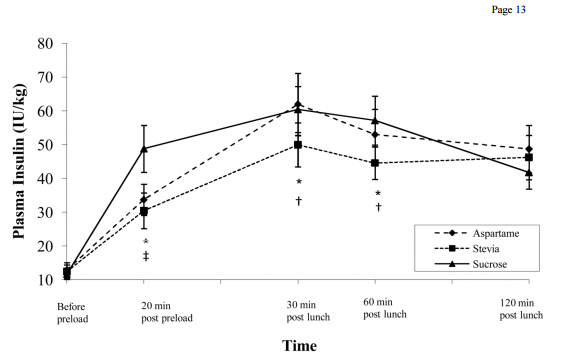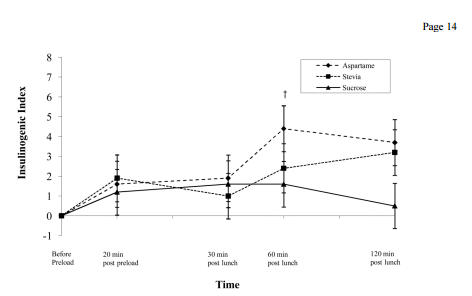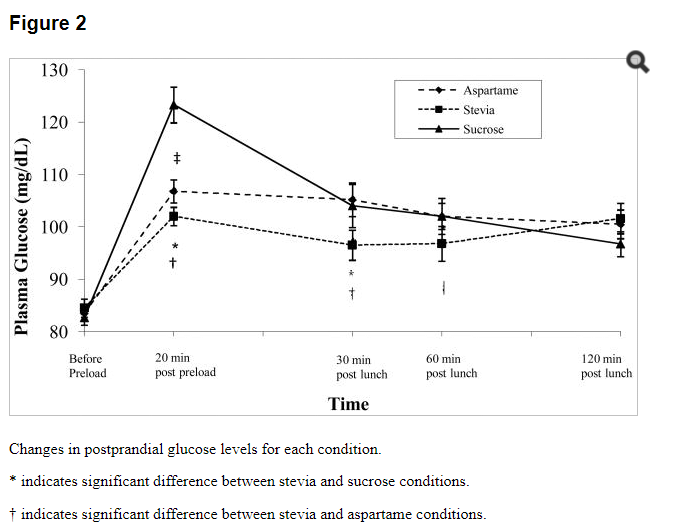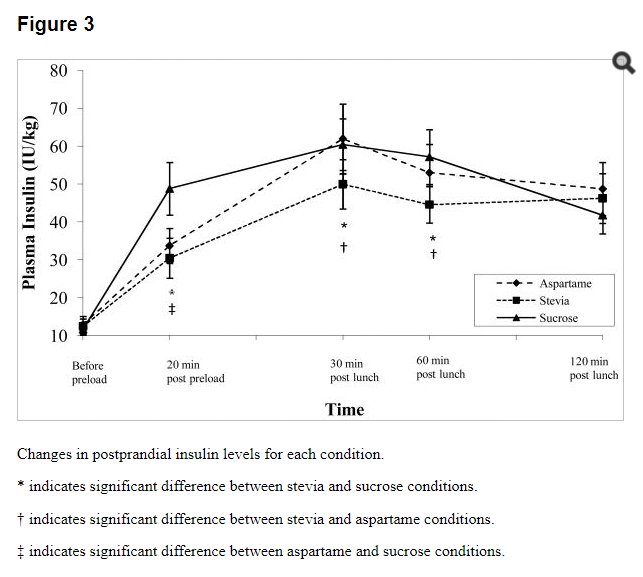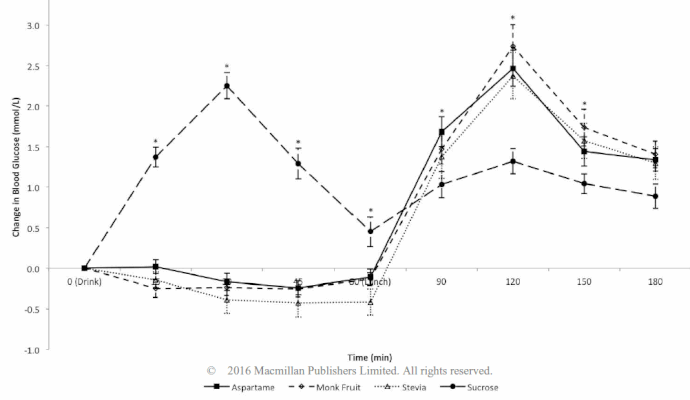Exactly, but that leaves open the question as to whether the insulin levels were significantly lower with Stevia simply because the dose was significantly lower. Insuline is spiked less because there is less triggering insulin, just like if you used 200 times less sugar (there’s not as much sugar to deal with, so less insulin is used to deal with it).
I’m guessing this means that the food was adjusted for sweetness, rather than equal amounts, unless the researchers added something to curve sweetness though:
There were no differences, however, in the hedonic ratings of the stevia and sucrose preloads in terms of appearance, aroma, sweetness, or texture.
It’s also interesting to note that the chart showed the increase in total calorie consumption for the day was almost entirely in the pre-load meals, not in the amounts of the other meals. Which makes me wonder if the extra mean 300ish calories from those meals were actually from the sucrose itself (which required about 200 times as much and is caloric).
For many purposes, this would practically still favor stevia and aspartame, of course, since one way or the other, if less is required to get the same effect on satiety and taste, and it has less of an impact otherwise, then it’s the better option. It may also just indicate that what we want is simply things with higher sweetness ratings, which would mean, for instance, that High Fructose Corn Syrup may really be better than sucrose due to it’s higher sweetness rating making it so less is required to achieve the same sweetness when replacing one with the other (this seems reasonable for other reasons as well, though I recall Dr. Lustig’s presentations showing that when sucrose was replaced with hfcs in many foods and drinks, more was put in for some reason, and the foods simply became sweeter). It would also say the key is simply to look for higher sweetness rated products, and make it a good idea to avoid those alternative sweeteners that have less sweetness. But that would require further study.


